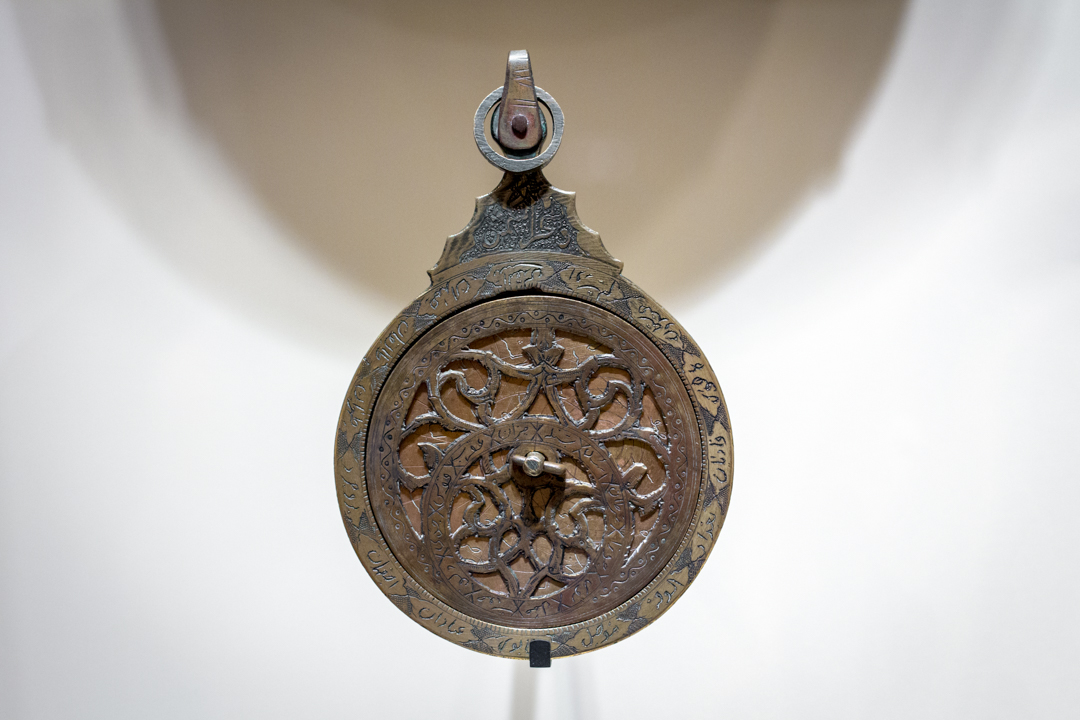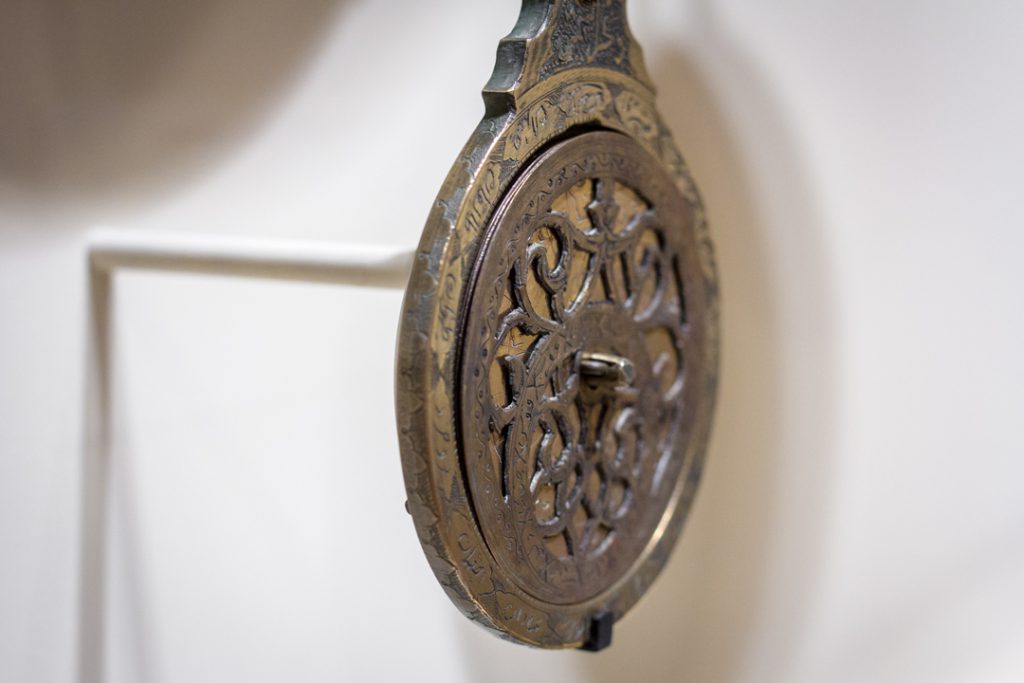Object of the Week: Decorative Astrolabe

When SAM acquired a quiet and exquisite Persian Decorative astrolabe in 2009, it was enacting a throwback to the collecting philosophy of our founding director, Dr. Richard Fuller. A trained geologist who put great store in studying things closely—in practicing connoisseurship, to use a pretty untrendy word—Fuller aimed to detect the intricacies of art objects through time and attention. He was deeply interested in how things were made, a perpetual tinkerer. He also seems to have enjoyed discovering why things were made a certain way, and especially how they were first used. Many of us won’t think of an object’s function as particularly relevant to an assessment of that thing as art, but it definitely factored into Dr. Fuller’s deliberations.
In his memoir on the founding and growth of SAM, A Gift to the City, Dr. Fuller writes a straightforward apology for the museum’s collecting strategy: “Within our limited means we endeavor to acquire authentic items of high aesthetic quality and, if possible, functional interest. I strive for items that reflect the creative talent of each period and which, in geologic terms, serve as index fossils for their specific time and culture.”1
In sum, he looked for beautiful objects that told stories. In this framework it mattered significantly whether an object visibly reflected a certain people or time or place, and readily apparent signs of an original use or context were coveted. Functional objects were not only not avoided but embraced. There is logic to this: If we want to know something about people who are distanced from us, seeing their stuff and knowing exactly how it is, or was, used can be very helpful.

I love the Persian Decorative astrolabe because it is an “index fossil” of the kind Dr. Fuller was always after, but it also has subtle and crafty ways of teaching us.
First, the ways that it falls into his categories: As the single most important astronomical tool of the Middle Ages, the astrolabe holds great functional interest. Astrolabes were, at one time, widely used by navigators, astronomers, mathematicians, and theologians to solve problems related to the motion of celestial bodies. The astrolabe stands as a symbol of the many scientific accomplishments of an era and the specific culture of medieval Islam. It’s also suitably small. Dr. Fuller bought many little things, maybe reflecting his reserved personality, but definitely reflecting his desire to leverage limited funds to the greatest effect. Finally, it has “high aesthetic quality,” to borrow Dr. Fuller’s geologic nomenclature. Precisely and carefully decorated, it would no doubt have passed this portion of the test. Calligraphic script dances across the surfaces of its interlocking discs, broken up by elegant decorative patterns.
In one clear way SAM’s Decorative astrolabe differs from Dr. Fuller’s expectations. It was likely never functional but always a decorative object. Other technologies began to replace the astrolabe for its functional use in the 17th century; this example, dating to the 19th century, was probably never needed for navigating the seas or charting planetary movements. It’s a vestigial tool, a once-functional object rendered obsolete.
So we look at this object, and it seems to, but doesn’t really, tell us how its original audience related to it. It’s cheeky, throwing us for a loop. Of course, that doesn’t mean that it doesn’t have stories. It just means the stories are different than what we expected to hear. It opens up so many new questions, like why, in the 19th century, in Persia, the memory of the astrolabe remained so strong that an artisan produced this fine example?